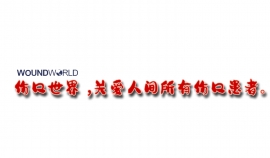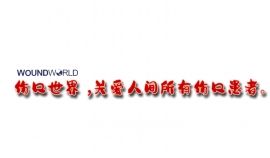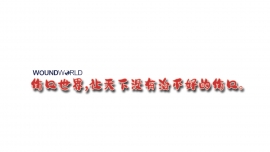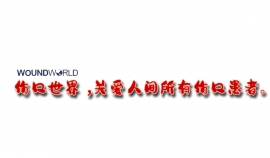文献精选
Zibotentan, a developmental endothelin A receptor antagonist, in combination with dapagliflozin in SGLT2 inhibitor-naïve patients, was effective in reducing albuminuria in people with chronic kidney disease (CKD) already on optimised RAAS blockade in the XENITH-CKD trial published in the Lancet. In this randomised, active-controlled, phase 2b clinical trial, adults with CKD, an eGFR of ≥20 mL/min/1.73 m2 and a uACR of 150–5000 mg/g (approximately 17–565 mg/mmol) were randomised to 12 weeks of treatment with zibotentan 1.5 mg daily (high dose; N=179), zibotentan 0.25 mg (low dose; N=91) or placebo (N=177), all in combination with dapagliflozin 10 mg daily, and in addition to full doses of an ACE inhibitor or ARB if tolerated. At 12 weeks, compared with placebo, there was a significant 33.7% reduction in uACR in the high-dose zibotentan group and a 27% reduction in the low-dose group. Fluid retention had been identified in previous studies of endothelin A antagonists; therefore, weight and B-type natriuretic peptide were monitored during the study and demonstrated fluid retention event rates of 18% with high-dose zibotentan and dapagliflozin, 9% with low-dose zibotentan and dapagliflozin, and 8% with dapagliflozin alone.
Citation: Brown P (2023) Diabetes Distilled: Reaching a XENITH in cardiorenal protection. Diabetes & Primary Care 25: [Early view publication]
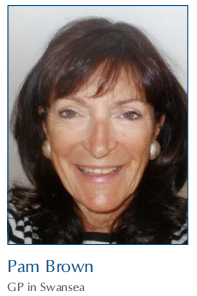
陈银燕 1 , 张敏 1 , 王雪儿 1,2 , 卢魁 3 , 房兆鑫 3 , 张琳 1 *
1. 南方医科大学基础医学院组胚教研室,国家药监局化妆品安全评价重点实验室,广东省药品监督管理局化妆品安全与功效关键技术重点实验室,广东省组织构建与检测重点实验室,广州 510515;
2. 新疆医科大学第一附属医院昌吉分院,新疆 昌吉 831199; 3. 南方医科大学第三附属医院急诊科,广州 510515
【摘要】 目的构建一种皮肤感染性慢性溃疡动物模型。 方法C57BL/6小鼠通过药物处理、磁铁造成创面后,使用 3M无菌透明敷料对伤口进行覆盖,观测和记录小鼠伤口的变化。挤压后的第 3、7、14、21、28 d,大体拍照,伤口部位取材,通过 HE染色、Masson染色、免疫组化染色、16SrDNA检测观察伤口的病理变化。 结果 大体观察第 3天开始有腐肉覆盖,渗出液渗出,至 28天腐肉增多,第 1~28天伤口愈合率均小于 0;与正常皮肤相比,HE 染色显示,伤口部位存在大量炎症细胞浸润和坏死组织碎片;Masson染色显示,伤口部位仅少量胶原纤维散在分布于坏死组织中,且排列紊乱松散;继而免疫组化显示,伤口部位M1型巨噬细胞阳性率显著高于周围正常皮肤(P<0.001),M2型阳性率没有差异,M1与M2型巨噬细胞的比值最高可达10;免疫组化显示第14天炎症因子TNF-α和IL-1β在伤口部位高表达;进一步 16SrDNA 检测显示,第 0 天菌群多样化明显,第 3 天之后变形菌门占据 90% 以上,伤口细菌多样化消失,出现菌群失调。 结论 本研究利用药物提高小鼠氧化应激水平,磁铁挤压的方法模拟伤口部位组织缺血坏死,3M 膜促进伤口腐肉形成和菌群失调,通过大体观察、组织学染色、免疫组化和菌群 16SrDNA结果均符合临床上皮肤慢性溃疡的发展特征。该造模方法可以成功构建一种皮肤感染性慢性溃疡动物模型。
【关键词】 皮肤慢性溃疡; 炎症; 巨噬细胞; 菌群失调
【中图分类号】R641 【文献标识码】A 【DOI】10.13418/j.issn.1001-165x.2023.5.11
A method of constructing an animal model of cutaneous infectious chronic ulcer
Chen Yinyan1 , Zhang Min1 , Wang Xueer1,2 , Lu Kui3 , Fang Zhaoxin3 , Zhang Lin1 * 1. Department of Histology and Embryology, NMPA Key Laboratory for Safety Evaluation of Cosmetics, GDMPA Key Laboratory of Key Technologies for Cosmetics Safety and Efficacy Evaluation, Key Laboratory of Construction and Detection in Tissue of Guangdong Province, School of Basic Medical Sciences, Southern Medical University, Guangzhou 510515, China; 2.Changji Branch Hospital of The First Affiliated Hospital of Xinjiang Medical University, Changji 831100, China; 3.Emergency Department, the Third Affiliated Hospital of Southern Medical University, Guangzhou 510515, China
【Abstract】 Objective To construct an animal model of cutaneous infectious chronic ulcer.
Methods
After the wound of C57BL/6 mice was caused by drug treatment and magnet, the wound was covered with 3M sterile transparent dressing, and the changes of the mouse wound were observed and recorded. On the 3rd, 7th, 14th, 21st and 28th days after extrusion, the wound site was taken from the material, and the pathological changes of the wound were observed by HE staining, Masson staining, immunohistochemical staining and 16SrDNA detection. Results In general, it was observed that there was carrion covering on the 3rd day, exudate exudation, and the carrion increased on the 28th day, and the wound healing rate was less than 0 on the 1st-28th day. Compared with normal skin, HE staining showed a large number of inflammatory cell infiltrates and necrotic tissue fragments at the wound site; Masson staining showed that only a small number of collagen fibers were scattered in the necrotic tissue at the wound site, and the arrangement was loose; Immunohistochemistry showed that the positive rate of M1 macrophages at the wound site was significantly higher than that of the surrounding normal skin (P<0.001), there was no difference in the positive rate of M2 type, and the ratio of M1 to M2 macrophages was up to 10; immunohistochemistry showed that the inflammatory factors TNF-α and IL-1β were highly expressed at the wound site on day 14; 16SrDNA detection showed that the bacterial diversity on day 0 was obvious, and after the third day, the proteobacteria phylum accounted for more than 90%, and the diversity of wound bacteria disappeared, and dysbacteriosis appeared.
Conclusion In this study, the use of drugs to increase the level of oxidative stress in mice, the method of magnet extrusion simulated ischemic necrosis of wound tissues, and the 3M membrane promoted the formation of wound carrion and dysbacteria, and the results of general observation, histological staining, immunohistochemistry and microbiota 16SrDNA are all consistent with the development characteristics of chronic skin ulcers in clinical practice. This modeling method can successfully construct an animal model of skin infectious chronic ulcers.
【Key words】Skin ulcer; Inflammation; Macrophages; Dysbiosis
Corresponding author: Zhang Lin, E-mail: 该Email地址已收到反垃圾邮件插件保护。要显示它您需要在浏览器中启用JavaScript。
【收稿日期】2023-03-09
【基金项目】广东省自然科学基金项目(2019A1515011213, 2020A1515011067,);广东省医学科学技术研究基金面上项目(A2020136);新疆维吾尔自治区自然科学基金面上项目(2019D01A83);广东省药品监督管理局科技创新重点实验室项目(2023ZDZ12)。
【作者简介】陈银燕(1997-),女,广东潮州人,在读硕士,研究方向:皮肤创伤,E-mail:该Email地址已收到反垃圾邮件插件保护。要显示它您需要在浏览器中启用JavaScript。
【通讯作者】张琳,教授,博士生导师,E-mail:该Email地址已收到反垃圾邮件插件保护。要显示它您需要在浏览器中启用JavaScript。
Serious adverse pregnancy outcomes (congenital anomalies, stillbirths and neonatal deaths) occurred in 6.6% of women with type 2 diabetes in 2022, up from 4.9% in 2021, according to data just published in the National Pregnancy in Diabetes (NPID) Audit, while preparedness for pregnancy also decreased. In contrast, adverse pregnancy outcomes and preparedness for pregnancy improved year-on-year in women with type 1 diabetes. Overall, 1 in 2 babies born to mothers with pre-existing diabetes had complications related to maternal glucose, such as large birth weight, premature delivery (<37 weeks’ gestation) and admission to neonatal care units. In 2022, there were more pregnancies in women with type 2 diabetes (nearly 3000) than in those with type 1 diabetes (2300). NICE recommends that preparedness for pregnancy should include use of reliable contraception until the target HbA1c of <48 mmol/mol is achieved, monthly HbA1c checks when trying to conceive, 5 mg folic acid daily, advice on weight loss if BMI is >27 kg/m2 , and medication review with replacement of potentially harmful medications such as ACE inhibitors, ARBs, statins and glucose-lowering drugs other than metformin and insulin. Immediate referral to specialist antenatal care as soon as pregnancy is confirmed is also recommended. The NPID report recommends that Integrated Care Boards in England and Welsh Health Boards ensure that CGM and hybrid closed-loop pumps are accessible for appropriate women with type 1 diabetes; that providers of maternity diabetes care improve glucose-lowering to reduce the adverse trend of serious pregnancy outcomes; and that the HbA1c target of <48 mmol/mol at conception, prevention of unplanned pregnancy and preparedness for pregnancy remain imperative targets.
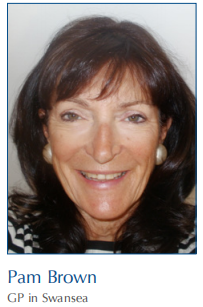
Citation: Brown P (2023) Diabetes Distilled: Pregnancy outcomes worsen for women with type 2 diabetes. Diabetes & Primary Care 25: 175–7
Cardiovascular risk and lipid-lowering therapies are not new concepts in type 2 diabetes management. However, over recent years, lipid therapies have evolved and clinicians are now faced with more options than just statins. This At a glance factsheet is a brief guide to the newer lipid-lowering therapies available, their different modes of action and their place in treatment. A previous factsheet has discussed cardiovascular risk and how this should be assessed to guide whether lipid-lowering therapy is indicated.
